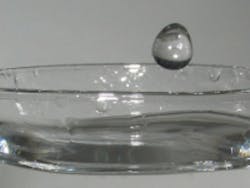WaterWorld Weekly Newscast, May 1, 2017
The following is a transcript of the WaterWorld weekly Newscast for May 1, 2017.
Hi, I'm Angela Godwin for WaterWorld magazine, bringing you water and wastewater news headlines for the week of May 1. Coming up...
California proposes strict limit for TCP in drinking water
Oily substance found at wastewater treatment plant
Badger Meter to acquire Swedish flow measurement technology
New technology removes trace contaminants including PFOA, PFOS
The California State Water Resources Control Board is proposing a 5-parts-per-trillion limit for the toxic industrial solvent 1,2,3-trichloropropane, or TCP, in public drinking water.
Although TCP is no longer widely used, the persistent compound has been found in wells, reservoirs, and other public water sources -- not only in California but a dozen other states as well.
The proposed limit of 5 parts per trillion is the lowest level that can be detected by existing technologies.
If the limit is adopted, California would be only the second state after Hawaii to establish a TCP threshold.
City officials in Rochester, New Hampshire, are trying to determine the source of a mysterious oily substance that seeped its way into the wastewater treatment plant.
Officials believe between 50 and 100 gallons entered the system over three separate incidents. The substance, they say, is likely hydraulic fluid or used motor oil.
Whether it was an accidental spill or an illegal one, officials are asking the public for any information that might help solve the mystery -- and avoid a costly and lengthy investigation.
They are eager to identify the cause because the substance is detrimental to the wastewater facility's biological treatment process.
D-Flow Technology is a knowledge-based company specializing in ultrasonic technology, primarily for flow measurement.
Badger Meter said the acquisition will help strengthen its position in ultrasonic flow measurement by enabling the company to further enhance its existing E-Series® Ultrasonic product line, lower production costs and provide a platform for the continuing advancement of its ultrasonic capabilities.
A company called CycloPure has secured a patent providing broad coverage and methods of use for its innovative technology to remove trace contaminants.
The technology, based on a new class of highly-adsorbent cyclodextrin-based materials, is able to separate and remove pollutants even at trace concentrations, 1 part per billion and below.
The adsorbent materials, which were developed at Cornell University by Professor Will Dichtel, are able to remove a range of micropollutants, including the perfluorinated compounds PFOA and PFOS.
To learn more, visit cyclopure.com.
For WaterWorld magazine, I'm Angela Godwin. Thanks for watching.
